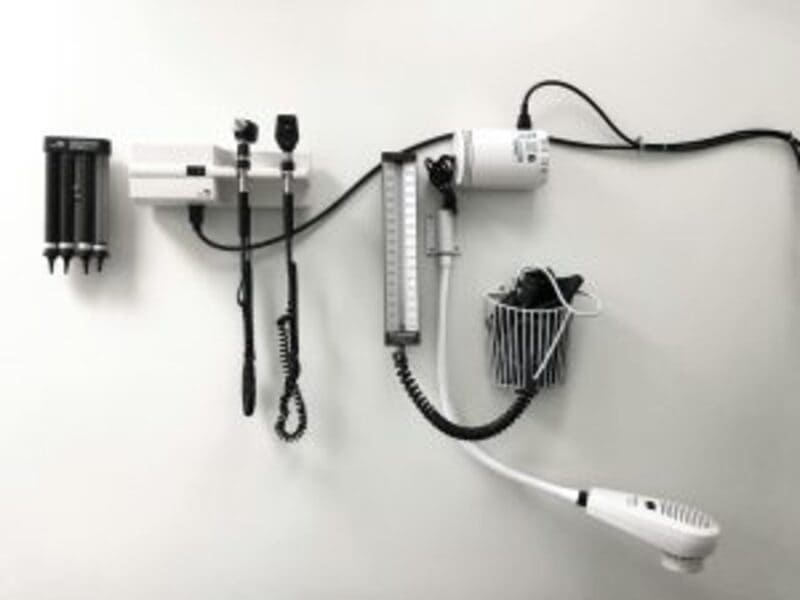Ear infections can be brutal. We have all had them, but they can be especially difficult for babies and toddlers ages six months to two years. Did you know that five in six babies have experienced at least one ear infection before their third birthday?
Middle-ear infections are among the most common childhood illnesses, along with the common cold, flu, and superficial sinus infections. Ear infections can emerge in several ways, such as an upper respiratory tract infection typically brought on by a virus. The ears filter bacteria and germs, which primarily cause pain and discomfort during an infection. Ear infections are tough on babies and small children, as their developing immune systems require antibiotics and surgery to drain excess fluid.
This can be difficult to figure out as a parent because children from six months to two years old often have difficulty communicating their feelings. But we can help. Here are three signs your infant or toddler suffers from an ear infection, what to do, why it happens to children more often than adults, and potential treatments.
Initial Signs of an Ear Infection
Among the first signs to look for if you suspect your child has an infection is tugging at the ear, which signifies the presence of middle ear pain. Additional symptoms include, but are not limited to, fussiness, excessive crying, mouth breathing, increased snoring, loss of appetite, fluid leakage, and enlarged adenoids in the throat and behind a small portion of the nose where drainage runs during sickness.
However, there are more severe symptoms, such as a fever, delayed speech, torn eardrums, the spread of infection, and hearing loss. Fevers can range from mild at 100.5 degrees Fahrenheit to severe at 104 degrees Fahrenheit. Additionally, if your baby or toddler flat-out refuses to eat, it may be a sign that an ear infection is on the horizon. Therefore, if your child is experiencing any of these symptoms, please get in touch with your pediatrician, local urgent care, or emergency facility.
Why they Are More Common in Babies and Toddlers

Understanding what causes ear infections is one thing, but why do they happen more in babies and toddlers than adults? Ear, nose, and throat (ENT) experts worldwide have determined that babies and toddlers are more likely to develop an ear infection because the tubes inside the inner ear, also known as the eustachian tubes, are underdeveloped compared to adults.
For example, babies’ and toddlers’ ear drums tilt vertically, making it easier for fluid to collect behind the eardrum and cause an infection. These infections are also more likely to occur in young children because their immune systems are still developing, making it more difficult for them to fight illness. It is also more prominent in children who attend daycare or preschool. But there are precautions you can take by practicing simple hygiene, like handwashing.
Potential Treatment Options
Treating ear infections in young children is a pretty easy feat. Many respond very well to treatment if done in the earliest stages. The treatment method depends on your child’s age, the severity of the infection, whether your child has had previous infections, and how long fluid has been inside the ear.
Antibiotic treatments are safe and effective for treating most bacterial ear infections but can fail to cure the problem in severe cases. Moreover, you should consult your child’s pediatrician to determine a viable treatment plan, such as placing ear tubes. Ear tube surgery works in extreme cases as a last-ditch effort when antibiotic and pain management treatments fail. The tube placement surgery is simple yet effective at keeping excessive bacteria and fluid away from the inner ear.
Conclusion
Though ear infections are common in babies from six months to two years of age, some things can alleviate the issue, such as pain management, antibiotic treatment from a healthcare provider, and even tube placement surgery. Determining a clear direction when your child is in this position can be challenging, but your pediatrician can help.
Remember all potential signs, including fussiness, fever, and pain, when monitoring your child for an infection to make the best decisions possible. Infections can be tricky and very tough for both parents and children, and we hope this breakdown provided you with some pointers that will help improve your parenting when your child is sick. It is always good to have this information handy, especially if you are a first-time parent.
For More Great Content
Total Apex is an all-encompassing content producer. We provide heavily detailed daily articles on entertainment, gaming, sports, and so much more! Check out all our great sports content, Total Apex Sports. Check us out on X @TotalApexEandG and our other sites: Total Apex Entertainment, Total Apex Gaming, Total Apex Sports Bets, and Total Apex Fantasy Sports.









